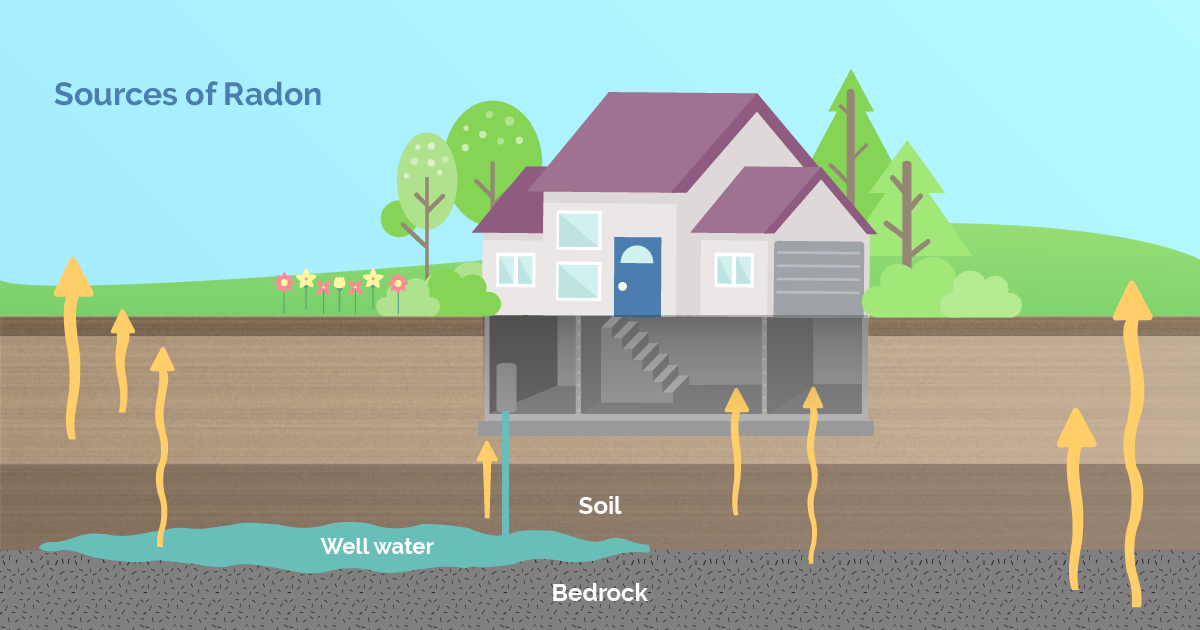What is radon gas? Is it dangerous?
Is radon really bad for you?
Breathing radon over time increases your risk of lung cancer. Radon is the second leading cause of lung cancer in the United States. Nationally, the EPA estimates that about 21,000 people die each year from radon-related lung cancer. Only smoking causes more lung cancer deaths.
The staying 46 states showed up to have some staff and also tasks devoted to radon control in the state government, primarily state health divisions. Dr. Jerry M. Cuttler, a radiation specialist as well as consultant to the American Council on Science as well as Health, has co-authored a paper qualified "Limit for Radon-Induced Lung Cancer Cells From Breathed In Plutonium Data," in addition to Charles L. Sanders. Dr. Cuttler explains that measured radon degrees and cancer end results record, in fact, a significant decrease listed below the all-natural occurrence of lung cancer. These observations negate the forecasts made using the LNT dose-response design.

Errors in retrospective exposure analysis can not be ruled out in the finding at low degrees. Other research studies into the results of residential radon direct exposure have not reported a hormetic effect; including for instance the appreciated "Iowa Radon Lung Cancer Cells Study" of Field et al., which also made use of innovative radon exposure dosimetry.

Is radon mitigation really necessary?
When radon https://angelomqve166.hatenablog.com/entry/2020/08/03/203052 gas enters the body, it exposes the lungs to small amounts of radiation. In small quantities, experts say this is harmless. However, in persistent exposures or larger quantities, radon can damage the cells of the lining of the lungs, increasing a person's chance of developing lung cancer.
This does not imply that a level below 4.0 pCi/L is thought about acceptable, as mentioned in the BEIR VI research study. It is estimated that a decrease of radon levels to below 2 pCi/L across the country would likely minimize the yearly lung cancer deaths attributed to radon by 50%. However, despite having an action degree of 2.0 pCi/L, the cancer cells threat presented by radon gas is still thousands of times higher than the dangers allowed for health hazards in our food and water.
- Lung cancer cells risk climbs 16% per 2.7 pCi/L boost in radon direct exposure.
- Radon gas is a naturally-occurring by-product of the contaminated decay of Uranium in the dirt.
- Depending upon your geographical place, the radon levels of the air you breathe outside of your residence might be as high as 0.75 pCi/L.
- The United States EPA has put it clearly, stating, "Any type of radon direct exposure has some risk of creating lung cancer.
How do you eliminate radon?
Possible symptoms include shortness of breath (difficulty breathing), a new or worsening cough, pain or tightness in the chest, hoarseness, or trouble swallowing. If you smoke and you know you've been exposed to high levels of radon, it's very important to quit smoking.
If they are exposed to radon, individuals that smoke or made use of to smoke have an even higher opportunity of establishing lung cancer cells. When you think of pollution, you might just consider what you're revealed to outdoors. But interior air quality in your house issues, as well, and it can be majorly influenced by the existence of a radioactive gas called radon. This gas can accumulate to unsafe degrees and raise your risk for establishing lung cancer-- even if you don't smoke, according to the American Lung Organization.
Radon-222 has been categorized by International Firm for Study on Cancer cells as being cancer causing to humans. There is sufficient evidence for the carcinogenicity of radon and also its degeneration products in humans for such direct exposures. He was informed that living in the home was the equivalent of smoking 135 packs of cigarettes a day, and also he and also his family had actually enhanced their risk of establishing lung cancer by 13 or 14 percent.
How long does it take for radon to cause cancer?
Fact: You will reduce your risk of lung cancer when you reduce radon levels, even if you've lived with an elevated radon level for a long time. Keep in mind that radon levels below 4 pCi/L still pose some risk and that radon levels can be reduced to 2 pCi/L or below in most homes.